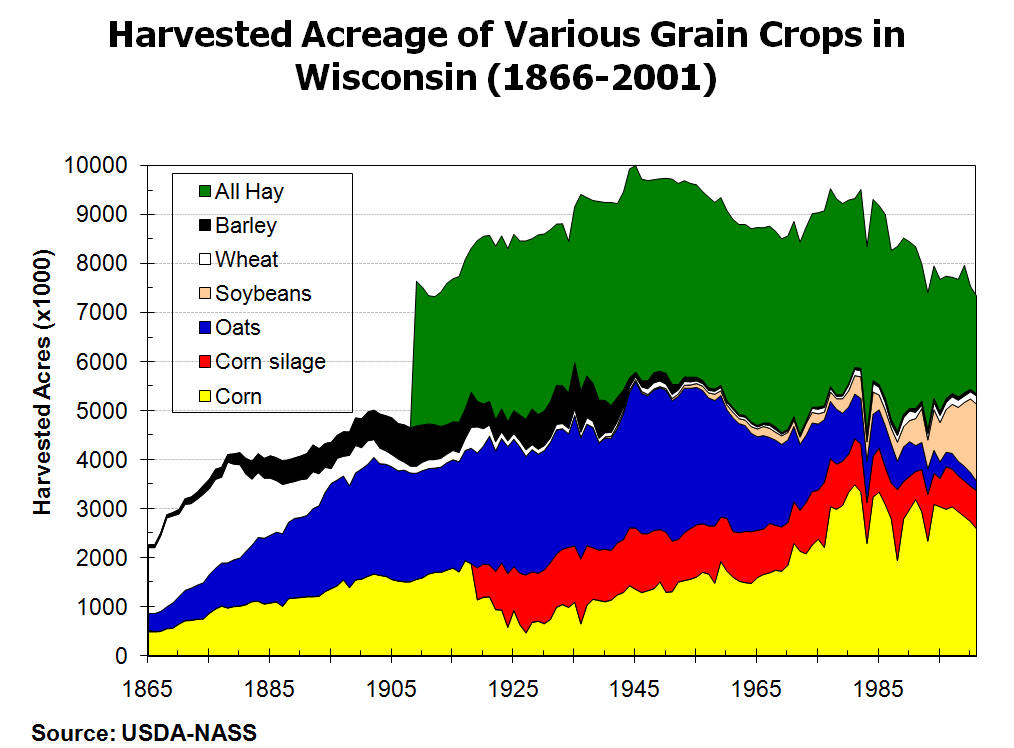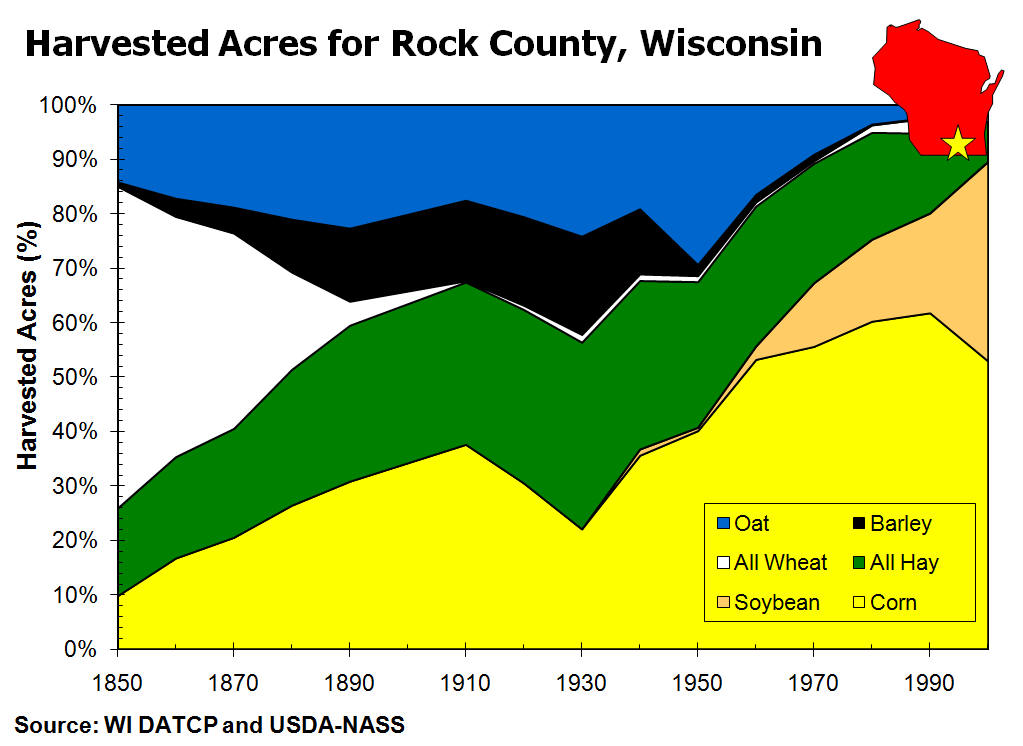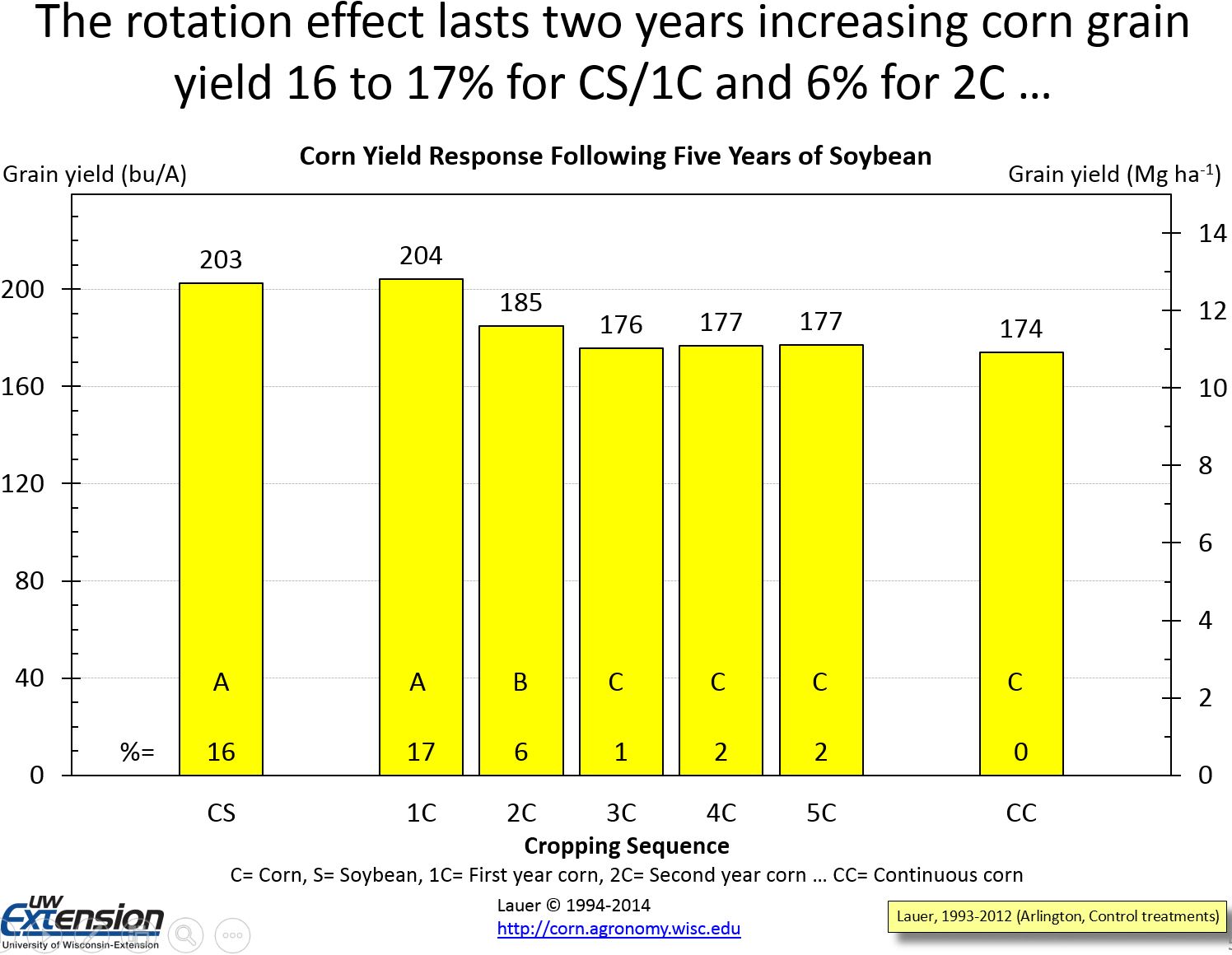Cropping Systems and Rotations
Originally written February 1, 2006 | Last updated
October 06, 2015
All crops are grown as part of a cropping system
A cropping system is the sum total of all crops and the practices used to grow those
crops on a field or farm.
Simple example = one variety grown each year in the same field with nutrients
provided as fertilizer to replace nutrients sold off the farm with the crop
Complex example = system where fruits, vegetables, tree crops, grain crops,
forage grasses and legumes, and livestock are all grown on a farm during the course
of a year with multiple harvest times and managed recycling of nutrients within
the system
Even a simple cropping system is quite complex in terms of interactions of plants
with soil, soil organisms and crop pests.
Monoculture: the production of a single crop in a field. This p: a cropping sequence on a field that includes more than one crop
over many years.
Benefits have been know for many years, though types and size of benefits have changed
over time as technology developed.
Need to find balance between economic return and productivity or sustainability.
History of crop rotations in Wisconsin


Prior to 1940, four year rotation for livestock-based system. Limited or no availability
of pesticides, limited power and equipment, and labor intensive.
r no availability
of pesticides, limited power and equipment, and labor intensive.
- oats under seeded with alfalfa or clover
- forage legume
- forage legume
- corn
After 1940, rapid mechanization, use of corn hybrids and nitrogen fertilizer, and
better power and equipment changed the cropping system. No longer livestock based
and dependent upon complex rotations. Developed into a grain cropping system.
- Corn-soybean
- Continuous corn
The Corn-Soybean Rotation
- Compared to most cropping sequences used in the world, the corn-soybean rotation
is relatively young.
- During most of the 20th century corn was planted following a legume like alfalfa
or clover. Only recently has the legume become soybean.
Yield response in corn-soybean rotations


- Response is usually observed.
- Reasons for response are unclear.
- N effect
- Tillage
- Residue alleopathy
- Most likely rotation effect is complex with small and interacting effects on soil
microorganisms (both harmful and beneficial), nutrient supply, insects, soil structure,
and other chemical, physical, and biological factors.
Good rotations:
- include both cereals and legumes
- improve soil structure and soil fertility
- control soil-borne insects and some diseases
- cut chemical costs, fertilizer costs, and fuel costs by 15-30%
Rotating hybrids and varieties
- MN: same hybrid planted in sequence tended to yield less than when a different hybrid
was used the second year.
- Suspect mychorrhizae effect on corn roots.
Erosion in rotations
- Soil is more erosive after soybeans than after corn
- During the winter after soybeans are grown, considerable soil loss can occur via
WIND EROSION. However, most soil erosion after soybeans occurs during the first
or second month after the next crop is planted (if the following crop is a row crop)
Conservation Security Program (CSP)
Farmers interested in switching away from 50:50 corn:soybean acres
- Other more challenging acres remain 50:50 C:S
- Take best corn ground and grow 2yr corn: 1yr SB
Recent developments indicating that the corn-soybean rotation may not be stable
- Diseases
- Corn: Gray leaf spot, Mycotoxins, Anthracnose
- Soybean: Brown stem rot, White mold, Sudden death syndrome, Rust
- Weeds: Development of Roundup resistant weeds
- Insects:
- Corn: Western and Northern corn rootworm
- Soybean: Soybean aphid, Bean leaf beetle
- Natural gas supply in winter of 2001, 2004
- Corn rootworm
- Soybean cyst nematode
- Carbon sequestration
- Selection of pathogen races i.e. Brown stem rot
- Gulf of Mexico hypoxia
Rotations are the "black box" of agronomic sciences. Response is almost
always measured, but it is unknown how and why the response occurs.
Further Reading
Managing the Rotation from Alfalfa to Corn by Yost, Coulter, and Russelle